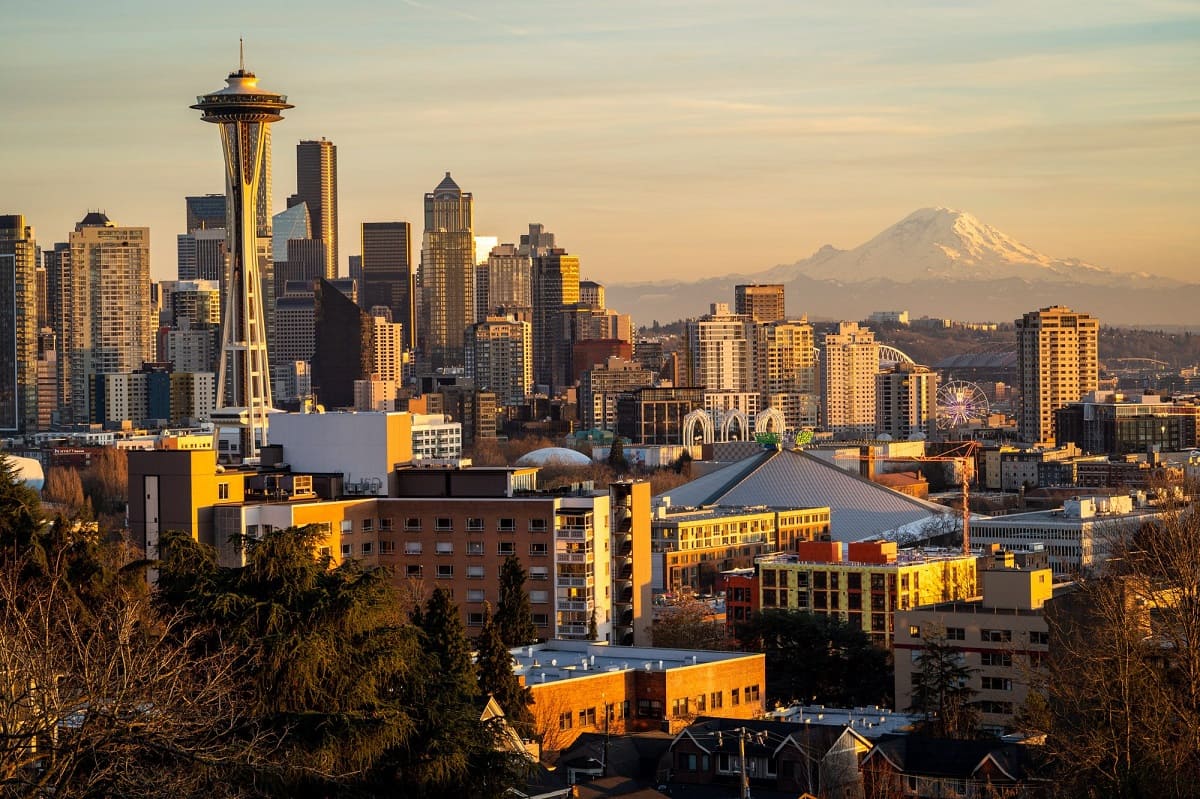Home>Weather and Climate>Tucson Monthly Average Temperatures


Weather and Climate
Tucson Monthly Average Temperatures
Published: February 29, 2024
Discover the monthly average temperatures in Tucson and plan your trip accordingly. Learn about the weather and climate to make the most of your visit.
(Many of the links in this article redirect to a specific reviewed product. Your purchase of these products through affiliate links helps to generate commission for Temperatures.com, at no extra cost. Learn more)
Table of Contents
Introduction
Tucson, Arizona, is a city renowned for its unique and diverse climate. Nestled in the Sonoran Desert, Tucson experiences a fascinating interplay of weather patterns, from scorching summers to mild winters. Understanding the monthly average temperatures in Tucson is crucial for residents and visitors alike, as it provides valuable insights into the city's distinct climate and helps in planning various activities throughout the year.
In this comprehensive guide, we will delve into the intricate details of Tucson's climate, exploring the monthly average temperatures, the factors that influence these temperatures, and practical tips for coping with the temperature extremes. By gaining a deeper understanding of Tucson's weather patterns, individuals can make informed decisions and better appreciate the beauty and challenges of living in this vibrant desert city.
Join us on this enlightening journey as we unravel the mysteries of Tucson's climate and gain a newfound appreciation for the dynamic interplay of nature's elements in this captivating desert oasis.
Read more: Antarctica Monthly Temperature Averages
Understanding Tucson's Climate
Tucson's climate is characterized by its arid desert conditions, with an average of 350 days of sunshine each year. The city experiences a unique blend of hot summers and mild winters, making it a sought-after destination for those seeking a warm and sunny retreat. The Sonoran Desert, where Tucson is located, plays a significant role in shaping the city's climate, influencing temperature patterns and precipitation levels throughout the year.
During the summer months, Tucson is known for its sweltering heat, with temperatures often soaring above 100°F (37.8°C). The intense heat is a result of the city's low humidity and abundant sunshine, creating an environment that is both dry and scorching. In contrast, the winter months bring relief from the extreme heat, with daytime temperatures averaging in the 60s and 70s°F (15.5-26.6°C). This pleasant winter climate attracts snowbirds and visitors seeking respite from colder regions.
Tucson's climate is also characterized by its distinct monsoon season, which typically occurs from mid-June to September. During this period, the city experiences dramatic thunderstorms, accompanied by heavy rainfall and impressive lightning displays. The monsoon season brings a welcome respite from the arid conditions, replenishing the desert landscape and providing relief from the summer heat.
The city's unique topography, surrounded by mountain ranges such as the Santa Catalina Mountains and the Tucson Mountains, contributes to microclimates within the region. These microclimates can result in variations in temperature and precipitation levels across different parts of the city, adding to the diversity of Tucson's climate.
Understanding Tucson's climate is essential for residents and visitors alike, as it allows for better preparation and planning. Whether it's staying cool during the scorching summer months or embracing the beauty of the desert landscape, a deeper understanding of Tucson's climate enriches the experience of living in or visiting this vibrant desert city.
Monthly Average Temperatures in Tucson
Tucson's monthly average temperatures exhibit a fascinating fluctuation throughout the year, reflecting the city's diverse climate. Understanding these temperature variations is crucial for residents and visitors, as it provides valuable insights into what to expect during different seasons.
In the scorching summer months, Tucson experiences exceptionally high temperatures, with July typically being the hottest month. The average high temperature in July soars to around 100°F (37.8°C), while the average low hovers around 75°F (23.9°C). These sizzling temperatures create an environment where seeking shade and staying hydrated are essential for staying comfortable during outdoor activities.
As the summer transitions into fall, Tucson's temperatures gradually begin to moderate, offering relief from the intense heat. October sees average high temperatures in the mid-80s°F (around 29.4°C) and average lows in the 50s°F (around 10°C), providing a more pleasant outdoor environment for residents and visitors to enjoy.
The arrival of winter brings a significant shift in Tucson's temperatures, with December being the coolest month. Daytime temperatures average in the 60s and 70s°F (15.5-26.6°C), while nighttime temperatures can drop to the 40s°F (around 4.4-9.9°C). This mild winter climate makes Tucson an inviting destination for those seeking a reprieve from harsher winter conditions in other parts of the country.
Spring in Tucson heralds a gradual warming trend, with March marking the transition to more temperate weather. Average high temperatures in March reach the mid-70s°F (around 23.8°C), offering an ideal climate for outdoor activities and exploration of the city's natural beauty.
Understanding the monthly average temperatures in Tucson is essential for planning outdoor activities, events, and travel throughout the year. Whether it's preparing for the scorching heat of summer or embracing the mild winters, being aware of Tucson's temperature patterns allows individuals to make the most of their time in this vibrant desert city.
Factors Affecting Tucson's Temperatures
Tucson's temperatures are influenced by a myriad of factors, each playing a crucial role in shaping the city's unique climate. Understanding these factors provides valuable insights into the dynamics of Tucson's temperature patterns and the interplay of natural elements within the region.
-
Elevation and Topography: Tucson's elevation, at approximately 2,389 feet (728 meters) above sea level, contributes to its distinct temperature variations. The city's proximity to mountain ranges, including the Santa Catalina Mountains and the Tucson Mountains, creates microclimates within the region. Higher elevations typically experience cooler temperatures, while lower-lying areas, such as the Tucson Basin, are characterized by warmer conditions. This topographical diversity results in temperature differentials across the city, adding to the richness of Tucson's climate.
-
Desert Environment: As part of the Sonoran Desert, Tucson's climate is heavily influenced by its arid surroundings. The desert landscape absorbs and radiates heat, contributing to the city's scorching summer temperatures. Additionally, the low humidity in the desert environment allows for rapid cooling at night, leading to significant diurnal temperature variations. This unique desert setting shapes Tucson's climate, creating the hot, dry summers and mild winters that define the region.
-
Solar Radiation: Tucson's abundant sunshine plays a significant role in driving its high temperatures, particularly during the summer months. The city's exposure to intense solar radiation results in the heating of the earth's surface, leading to the sweltering conditions experienced in the summer. The angle of the sun and the length of daylight hours also influence temperature variations throughout the year, contributing to the distinct seasonal changes in Tucson's climate.
-
Monsoon Season: Tucson's monsoon season, typically occurring from mid-June to September, has a notable impact on the city's temperatures. The arrival of monsoons brings a shift in weather patterns, with increased cloud cover and precipitation helping to moderate the summer heat. The cooling effect of afternoon thunderstorms and the replenishment of moisture in the desert landscape contribute to temporary relief from the scorching temperatures, highlighting the seasonal dynamics of Tucson's climate.
-
Urban Heat Island Effect: The urban development and infrastructure in Tucson can contribute to the urban heat island effect, where built-up areas experience higher temperatures compared to surrounding rural areas. This phenomenon is influenced by factors such as the absorption and retention of heat by buildings and pavement, as well as the reduced vegetation cover in urban environments. As Tucson continues to grow and develop, the urban heat island effect may play a role in shaping localized temperature patterns within the city.
By considering these influential factors, individuals gain a deeper appreciation for the complexities of Tucson's climate and the diverse elements that contribute to its temperature dynamics. The interplay of elevation, desert environment, solar radiation, monsoon season, and urban development collectively shape the unique and captivating temperature patterns that define Tucson's distinct climate.
Tips for Dealing with Tucson's Temperature Extremes
Dealing with Tucson's temperature extremes requires a proactive approach to staying comfortable and safe in the face of the city's scorching summers and mild winters. Whether you're a resident or a visitor, implementing practical strategies can significantly enhance your experience in Tucson's dynamic climate.
-
Stay Hydrated: Hydration is paramount in Tucson's arid climate, especially during the sweltering summer months. Carry a reusable water bottle and ensure you drink plenty of fluids throughout the day. Whether you're exploring the city's outdoor attractions or simply going about your daily activities, staying hydrated is essential for combating the effects of the intense heat.
-
Seek Shade and Cool Spaces: When venturing outdoors during the peak of summer, seek shade whenever possible. Whether it's under the canopy of trees, in shaded outdoor seating areas, or within air-conditioned buildings, taking refuge from the direct sun can provide much-needed relief. Plan outdoor activities during the cooler morning or evening hours to minimize exposure to the midday heat.
-
Dress Appropriately: Dressing in lightweight, breathable clothing can help mitigate the impact of Tucson's high temperatures. Opt for light-colored and loose-fitting attire to facilitate air circulation and aid in keeping your body cool. Wearing a wide-brimmed hat and sunglasses can also provide protection from the sun's intense rays.
-
Protect Your Skin: The desert sun can be unforgiving, so it's crucial to protect your skin from harmful UV radiation. Apply sunscreen with a high SPF rating and reapply it regularly, especially if you're engaging in outdoor activities. Additionally, consider using sun-protective clothing and seeking shade to minimize sun exposure.
-
Embrace Indoor Activities: During the hottest parts of the day, consider engaging in indoor activities to escape the heat. Explore Tucson's museums, art galleries, and indoor attractions, or simply relax in the comfort of air-conditioned spaces. This allows you to enjoy the city's offerings while staying cool and comfortable.
-
Prepare for Temperature Variations: While summers are known for their scorching heat, Tucson's winter nights can bring cooler temperatures. Be prepared for temperature differentials by carrying a light jacket or sweater for evening outings. Embracing the mild winter climate also presents opportunities for outdoor exploration and leisure activities.
-
Stay Informed: Keep abreast of weather forecasts and advisories, especially during the monsoon season. Being aware of potential thunderstorms and flash flood warnings allows you to plan activities accordingly and take necessary precautions to ensure your safety.
By incorporating these practical tips into your daily routine, you can navigate Tucson's temperature extremes with confidence and make the most of the city's vibrant offerings throughout the year. Whether it's savoring the warmth of the desert sun or seeking respite from the summer heat, embracing these strategies enhances your experience in Tucson's captivating climate.
Read more: Monthly Average Temperatures In Tampa
Conclusion
In conclusion, exploring the monthly average temperatures and the factors influencing Tucson's climate provides a profound understanding of the city's dynamic and captivating weather patterns. Tucson's unique blend of scorching summers, mild winters, and the dramatic monsoon season creates a climate that is both challenging and enchanting, shaping the experiences of residents and visitors throughout the year.
The monthly average temperatures in Tucson exhibit a fascinating fluctuation, reflecting the city's diverse climate. From the sweltering heat of summer to the mild winters and the gradual transitions in between, understanding these temperature variations is essential for planning outdoor activities, events, and travel. By being aware of Tucson's temperature patterns, individuals can make informed decisions and fully embrace the beauty and challenges of living in this vibrant desert city.
The factors influencing Tucson's temperatures, including elevation and topography, the desert environment, solar radiation, the monsoon season, and the urban heat island effect, collectively contribute to the city's distinct climate. The interplay of these elements shapes the temperature dynamics, adding depth and complexity to Tucson's weather patterns. By considering these influential factors, individuals gain a deeper appreciation for the intricacies of Tucson's climate and the diverse elements that contribute to its temperature variations.
Dealing with Tucson's temperature extremes requires a proactive approach to staying comfortable and safe in the face of the city's climatic challenges. Implementing practical strategies, such as staying hydrated, seeking shade, dressing appropriately, and embracing indoor activities, allows residents and visitors to navigate Tucson's temperature dynamics with confidence and make the most of the city's vibrant offerings throughout the year.
In essence, gaining a deeper understanding of Tucson's climate and monthly average temperatures enriches the experience of living in or visiting this vibrant desert city. By appreciating the interplay of natural elements, embracing practical strategies for coping with temperature extremes, and savoring the unique seasonal variations, individuals can fully immerse themselves in the captivating and ever-changing climate of Tucson, Arizona.














